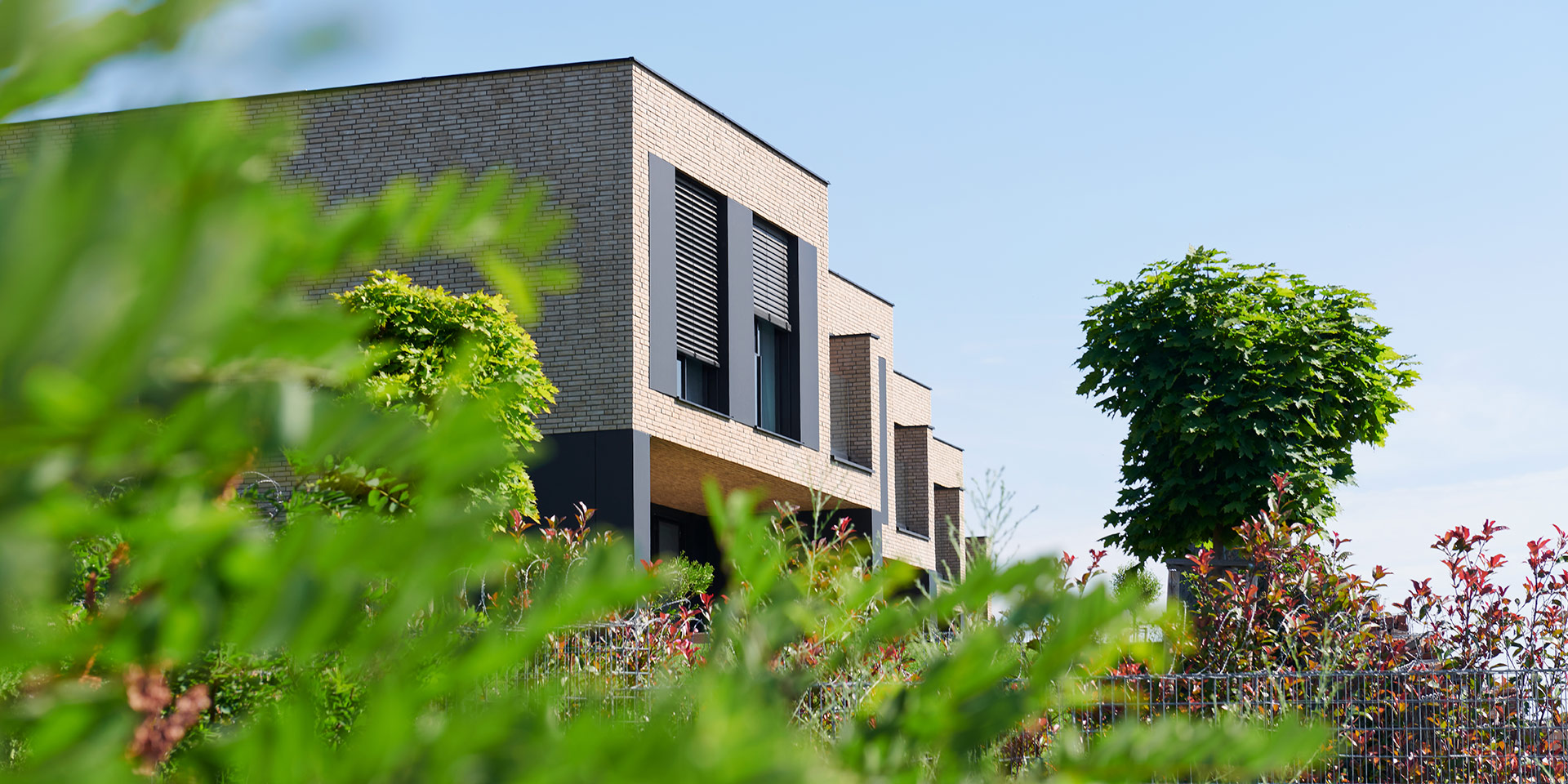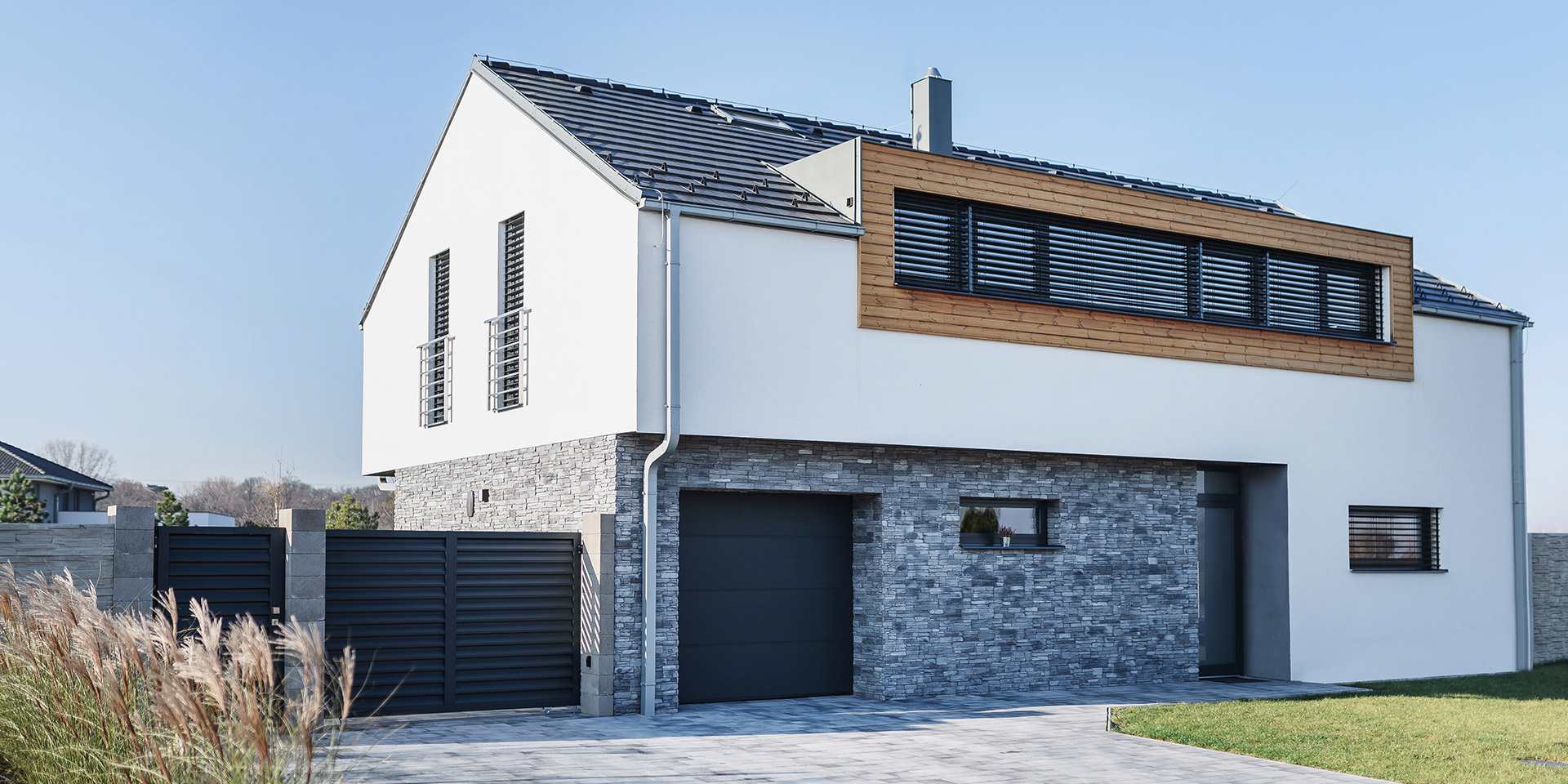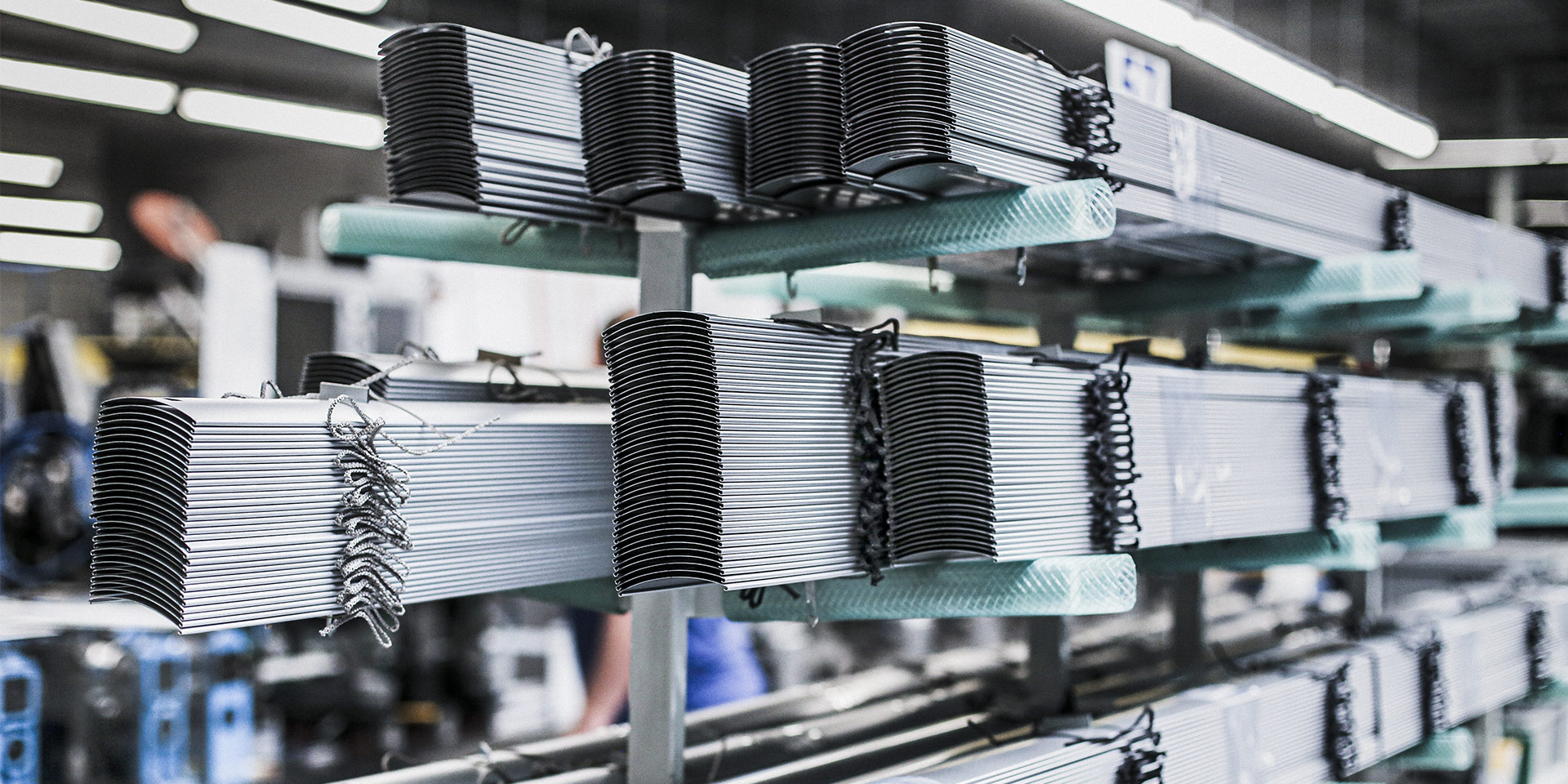Complete guide: how to choose an external textile screen
When choosing an external textile screen, you choose the type, fabric and control methods. Learn what options are available and what are the advantages and disadvantages of each solution.
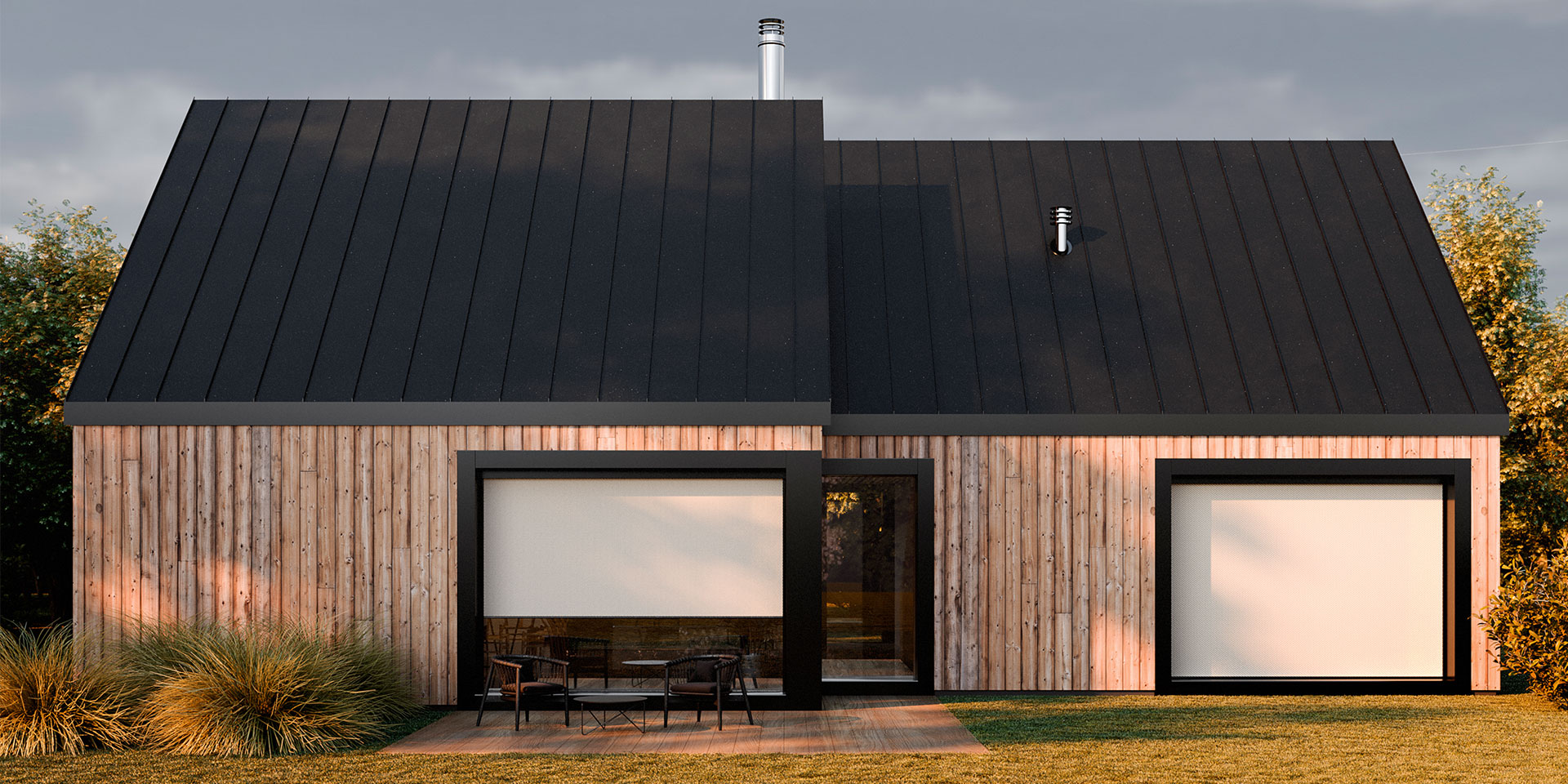
External textile screens are sold by companies under different names and are most often called include screens, screen blinds, external roller shutters or just roller shutters. However, it is always the same product – a durable textile screen, usually made of glass or polyester fibre coated with PVC, which is ideal for external shading of houses, office buildings and garden pergolas.
1. Choosing the type of textile screen
Even at first sight, external textile screens differ in the way they are guided. The choices are as follows:
- screens guided by a cable
- screens guided in a guiding rail,
- and the strongest screens guided in a zipper , which are called Zipscreens.
Screens guided by cables are simple textile screens stretched between the top box and the bottom load profile. The lower profile is guided on the sides by stainless steel cables. This type of screen only has low wind resistance, because the cables are anchored at only two points (top and bottom), meaning they are relatively loose and stronger winds will snap them. The main advantage is the lower price.
Screens that have a bottom load profile guided in guiding rails firmly connected to the building resist wind significantly better. Again, the fabric is not firmly anchored along its entire length and is again only stretched between the lower load profile and the upper box. However, the bottom profile is securely guided in the firmly anchored profiles.
The most durable are called zipscreens. In this solution, there is also a zipper welded along the entire length of the textile screen which serves to firmly connect the fabric to the guiding rails. Even strong winds cannot tear it off. Zipscreens therefore withstand wind perfectly, even better than external blinds.
At NEVA, we currently offer only the most durable zipscreens, namely the ZIP100 and ZIP135 textile screens.
You also choose the shape of the top box to go with the textile screen, which can be found in half-round or rectangular versions at most dealers. Architects recommend that you match the shape of the box to the shape of the sill or window frames. Therefore, choose a square box for sharp-edged sills and a half-round box for rounded sills.
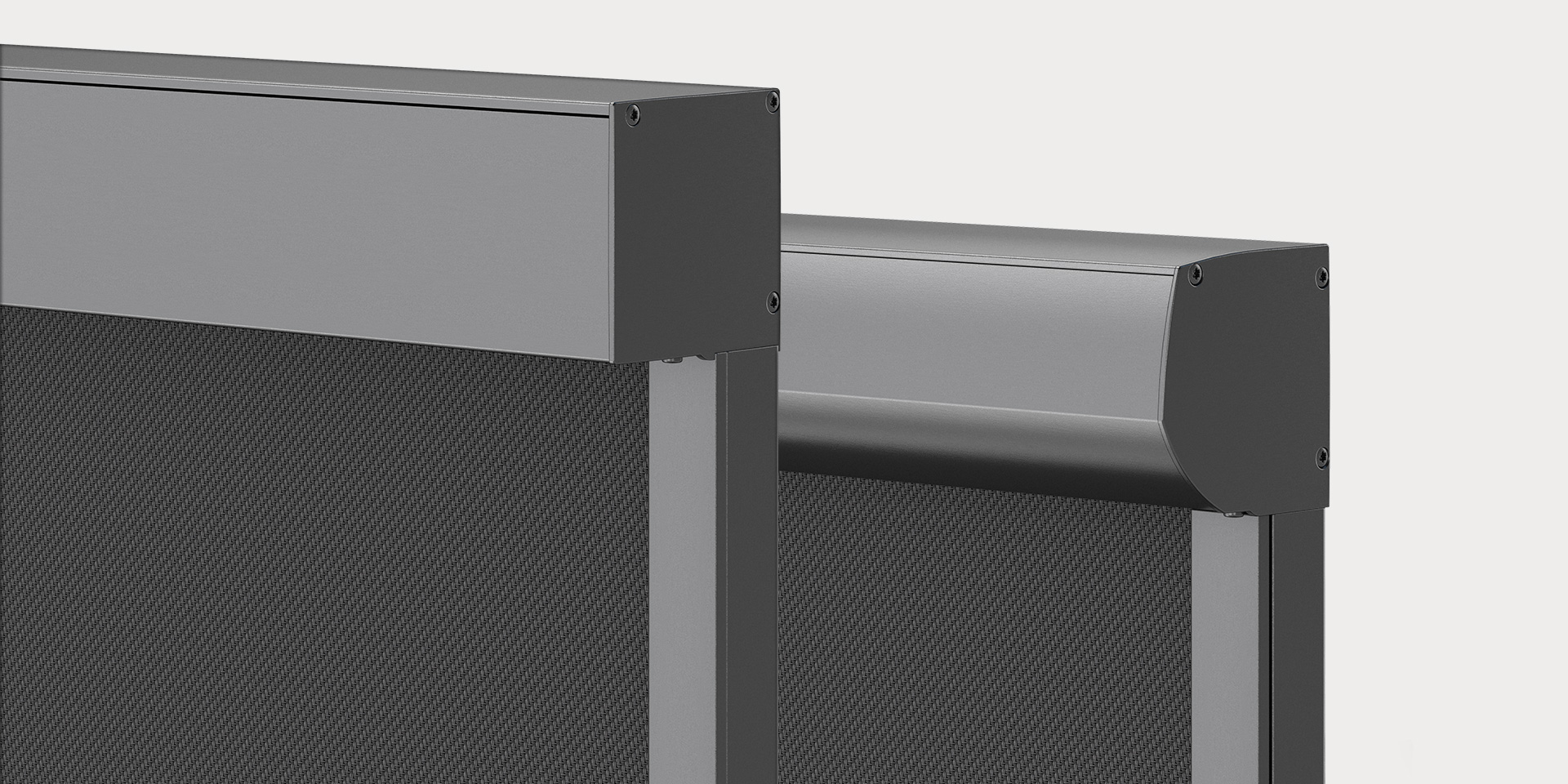
2. Choosing the fabric
If you have chosen the type of textile screen, the next step is to choose the fabric. There are plenty of fabrics on the market, most commonly made of polyester or fiberglass coated with a PVC (polyvinyl chloride) layer.
Polyester fibres are elastic and very tear-resistant; on the other hand, they are less resistant to extremely high temperatures. In our range, this type of fabric is represented by the manufacturer Serge Ferrari and its Soltis Perform 92. The fabric acts more like a solid surface, as it is first woven and then sealed with PVC.
Fiberglass, in contrast, is less elastic and is brittle; on the other hand, it resists high temperatures very well and has a slightly longer lifetime. In our range, this type of fabric is represented by the manufacturer Helioscreen and its fabric Sergé 3%. The fabric acts more like a woven fabric because the fibres are first sealed with PVC and then woven together.
We have written more about fabrics of textile screens in the article Fabrics of textile screens: what are they and what are they made of?
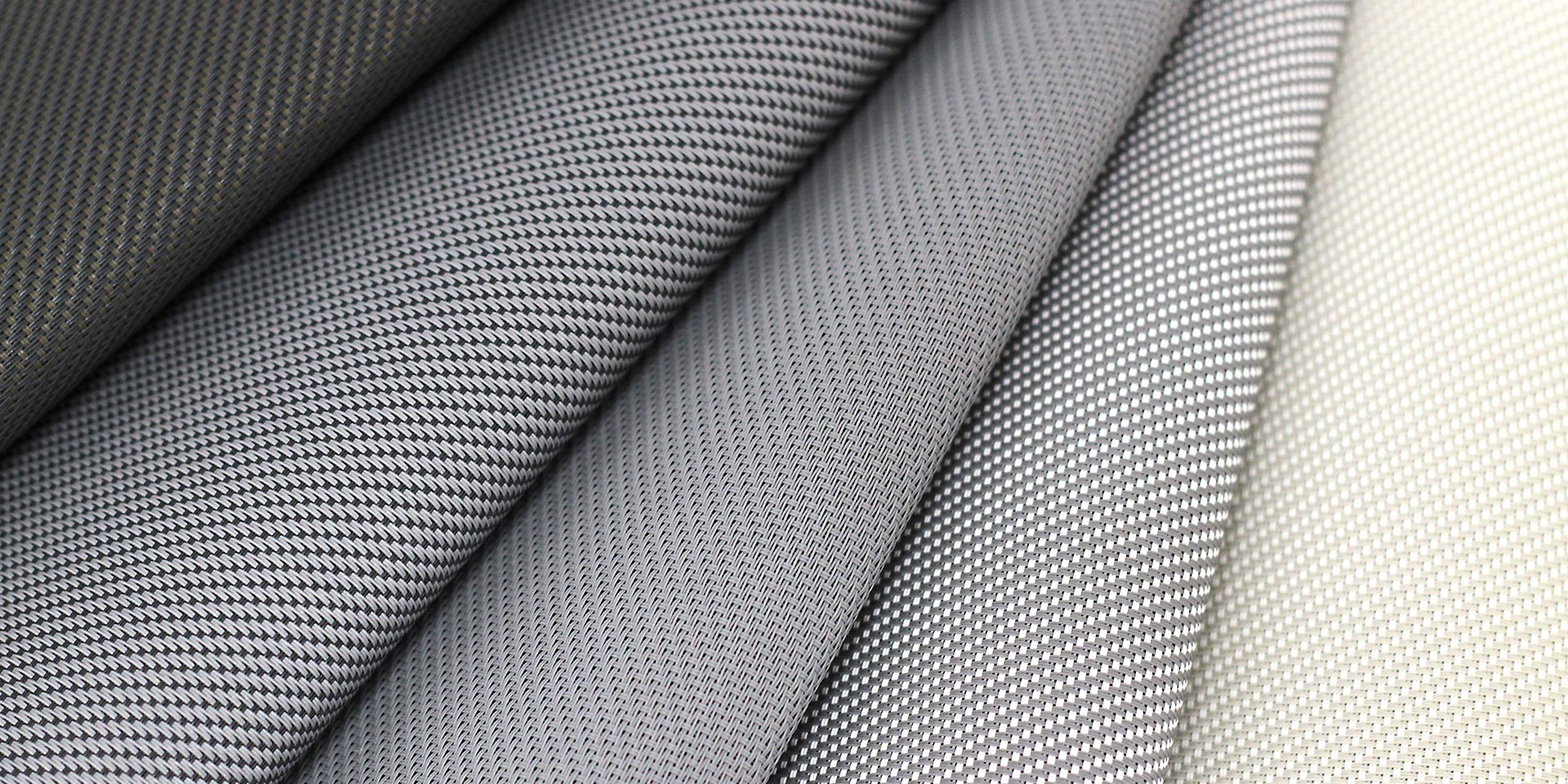
In practice, polyester and glass fibre have very similar properties apart from appearance, so it is more relevant to keep an eye on these parameters:
- Transmittance indicates the amount of light that a fabric lets into a room
- The openness factor determines how well you can see out through the fabric
- Absorption and reflection indicate the amount of light that a fabric will absorb and reflect
- Fabric colour , which has a great effect on all of the factors listed
Transmittance
The transmittance of a fabric is determined by its type and colour (for example, dark fabrics tend to transmit less light than light fabrics). It usually ranges from 0 to 40%, with 0% transmittance creating absolute darkness in a room. Fabrics with 0% transmittance are called blackout fabrics.
Fabrics with transmittances between 1 and 22% are generally considered strongly darkening and fabrics with transmittances of 23 – 40% are considered slightly darkening.
Openness factor
The openness factor usually ranges from 1 to 10 %. The higher the openness factor, the better you can see out through the fabric; on the other hand, it means that the fabric has inferior insulating properties and lets in more heat and light.
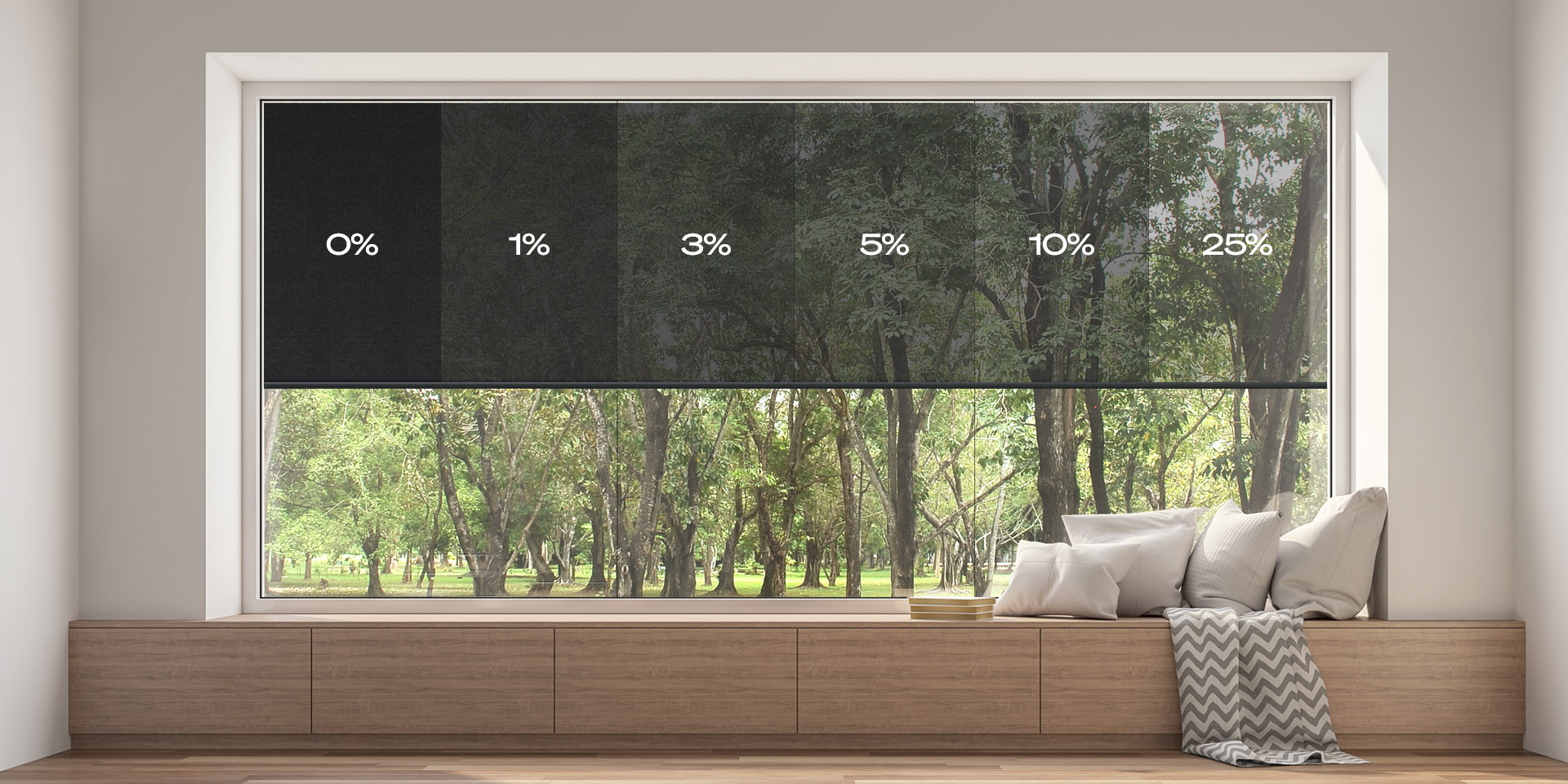
Absorption and reflection
This factor is most influenced by colour. It is a simple law of physics that light fabrics absorb less light and reflect more, while dark fabrics absorb more light and reflect less.
Colour
The fabric for the screens comes in many colours, and at NEVA we offer 21 basic colours and more on request. Again, however, please note that the colour of the fabric has an effect on, for example, transmittance or heat absorption, so in addition to the design, look at these parameters for the colour – the same textile screen in white and black will differ vastly in its properties.
In addition, some fabrics (for example, Sergé 3%) are woven from fibres of two different colours. The darker colour may be more dominant on one side and the lighter colour on the other. The fabric colours in the blinds can be swapped around at the customer’s request, so that you can choose which colour you want on the outside and which on the inside.
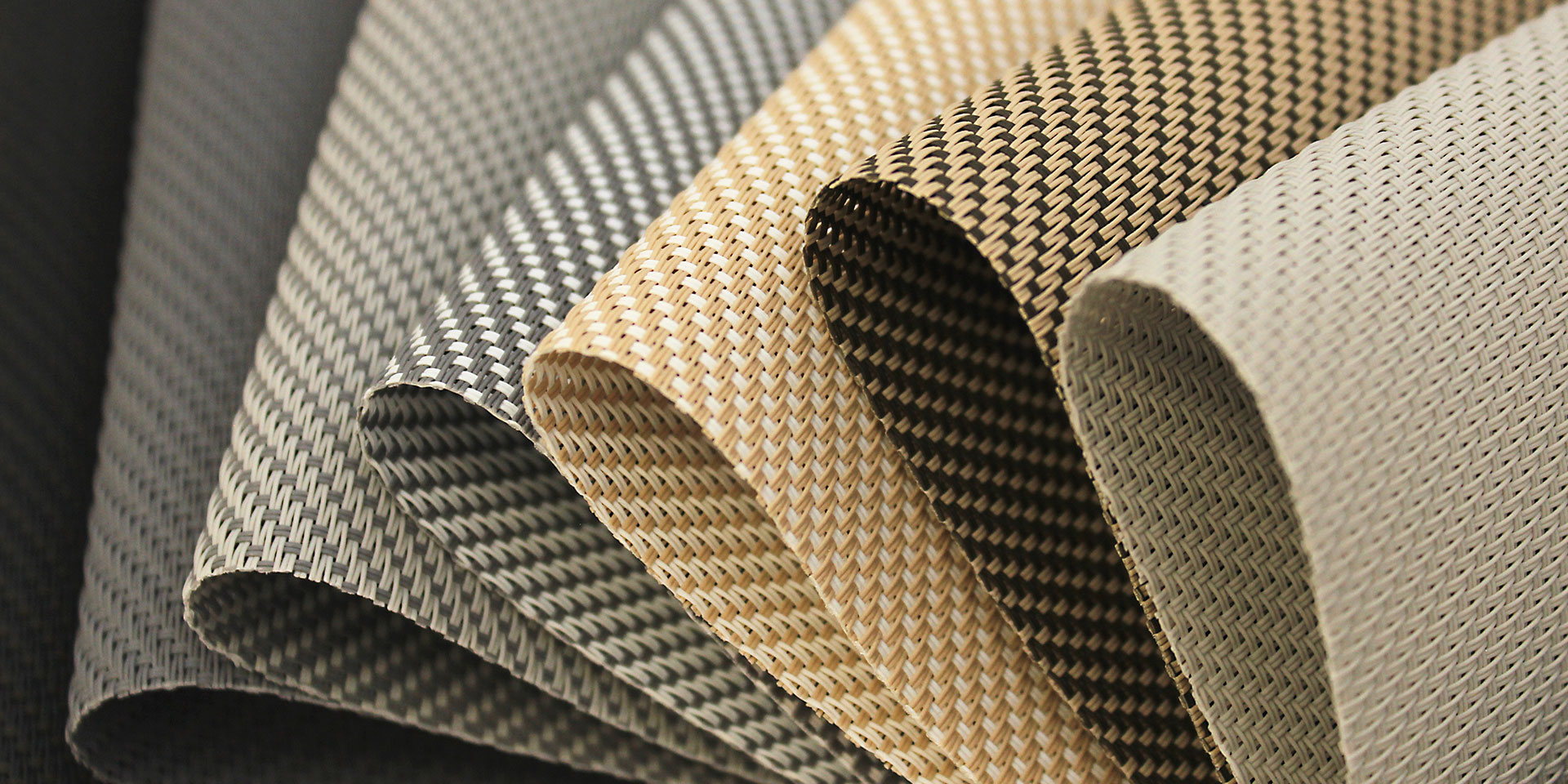
3. Selecting the control method
There are three basic control options to choose from.
The oldest and cheapest is manual control with a cord or a strap. However, this method is already on the decline and manufacturers are leaning more towards motor control. The main disadvantage of manual control is that the installer has to drill through the wall or window in order to get the cord or strap into the room.
A more convenient way of controlling textile screens can be acquired in the form of a button on the wall or a remote control. In this case, a motor is placed in the shaft and ensures the movement of the blind.
Press the buttons on the panel or the controller to extend or retract the textile screens. If you connect the control to multiple screens at the same time, you can control all of them in the house (or on the entire floor of an office building, for example) with one button.
Smart Home is the most advanced control method. With Smart Home, you can remotely control not only textile screens, but also, for example, the heating, lighting or garage doors. Textile screens are in this case controlled by electric motors that are connected to the home control unit. You can connect to this via your smartphone, tablet or computer, for example, and then control the blinds from these devices. You can also use control according to preset scenarios.
We recommend buying wind and sun sensors for the textile screens, which will pull them down when the sun is shining or, conversely, pull them up in strong winds to prevent damage.
Do you have additional questions about textile screens? Contact our partners.

